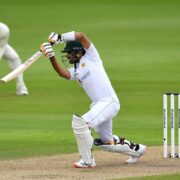Developing A Thought Leadership Plan: A Step By Step Run Down For Creating An Effective Thought Leadership Strategy
Since content will probably remain king for some time to come, more and more intelligent company executives are creating professional brands and thought leadership strategies to position their companies as valuable resources and thought leaders for audiences.
Becoming recognized as a thought leader will benefit your professional growth, open up new opportunities, and provide value to the company you work for. However, what is the precise process for becoming a thought leader?
Creating An Effective Thought Leadership Strategy
We assist you in developing a thought leadership plan in this post.
Let’s Delve Into Creating An Effective Thought Leadership Strategy.
Here Are The Main Steps In Developing A Thought Leadership Plan:
Establish objectives and match them with a plan.
Clearly defining your goals for your thought leadership approach is the first stage. This entails setting aside some time to sit down and make a goal list. What goals do you have in mind? To whom do you wish to speak? What type of influence are you hoping to achieve?
Once you have a firm understanding of your objectives, you need to make sure they complement your overarching company plan. Developing a thought leadership strategy in isolation from your commercial objectives is a waste of time. Thus, before proceeding to the next stage, spend some time to make sure they are in line.
Select The Intended Audience Or Audiences:
The first thing to do is decide who your target market is.
Then, delve into what your target audience truly wants, what their incomes are, what their values are, what their locations are, the level of their education, and their occupations.
You may start producing content that appeals to your target audience after you have a clear understanding of who they are.
Gather Published Articles On Thought Leadership And Relevant Material:
Gathering all of your company’s previous thought leadership content is the first step in developing a thought leadership strategy. Blog entries, white papers, eBooks, images, videos, and more are included in this. After obtaining all of this material, you may start arranging it into a coherent plan.
Developing a strategy for producing fresh thought leadership material is the second stage. This entails deciding on the subjects you will cover, the content creators, and the frequency of new content releases.
Developing a distribution strategy for your thought leadership material is the third phase. This includes setting up social media accounts, devising email marketing strategies, and starting a blog or website to house your content.
Developing a method for gauging the effectiveness of your thought leadership approach is the fourth phase. Setting objectives, choosing the criteria you’ll use to gauge success, and putting in place a system to monitor your advancement all fall under this category.
Making a budget for your thought leadership plan is the fifth stage. This includes figuring out how much you’ll spend on distribution, promotion, and content production.
Making a schedule in developing a leadership plan is the sixth stage. This entails deciding how long you will spend on each activity and establishing deadlines for each phase of the process.
Now, you simply need to adjust the strategy in whatever deems fit to the operations of your leadership plan.
How Do You Assess Whether Your Thought Leadership Approach Is Working?
You may gauge the effectiveness of your thought leadership approach in a number of ways.
Nonetheless, The Following Are Some Crucial Metrics to Remember:
Reach:
With your thought leadership material, how many individuals are you reaching? Numerous metrics are available to quantify this, such as newsletter subscriptions, website traffic, and social media participation.
Engagement:
How are your viewers interacting with your material once you’ve reached them? Do they read it, discuss it, or share it with others?
Authority:
Do you want to become known as a subject matter expert in your profession through your thought leadership content? Things like media mentions, speaking engagements, and accolades can be used to gauge this.
By following these measures, you may obtain a solid sense of whether your thought leadership approach is working and make any modifications. So let’s dissect this even further.
While attainable, thought-leadership objectives may appear high. Without the appropriate metrics, some of these strategies, meanwhile, can be challenging to measure.
Who Is Most Suited To Benefit From Creating An Effective Thought Leadership Strategy?
In summary, thinking leadership should be implemented in some capacity by all organizations. In order to gain the trust of their audience, entrepreneurs must exhibit their expertise in their industry. Adopting this stance in your sector can have a number of advantageous effects, such as increased brand equity and brand recognition.
Read Also: Exploring the Greatest Athletes in Sports History













Comments